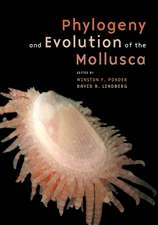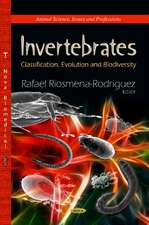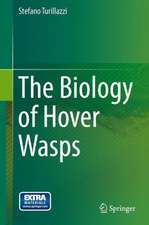Relationships of Natural Enemies and Non-prey Foods: Progress in Biological Control, cartea 7
Autor Jonathan G. Lundgrenen Limba Engleză Hardback – 27 feb 2009
| Toate formatele și edițiile | Preț | Express |
|---|---|---|
| Paperback (1) | 1205.23 lei 6-8 săpt. | |
| SPRINGER NETHERLANDS – 25 noi 2010 | 1205.23 lei 6-8 săpt. | |
| Hardback (1) | 1213.92 lei 6-8 săpt. | |
| SPRINGER NETHERLANDS – 27 feb 2009 | 1213.92 lei 6-8 săpt. |
Din seria Progress in Biological Control
- 18%
 Preț: 936.51 lei
Preț: 936.51 lei - 18%
 Preț: 1201.37 lei
Preț: 1201.37 lei - 18%
 Preț: 1358.24 lei
Preț: 1358.24 lei - 18%
 Preț: 939.14 lei
Preț: 939.14 lei - 18%
 Preț: 940.20 lei
Preț: 940.20 lei - 15%
 Preț: 621.55 lei
Preț: 621.55 lei - 24%
 Preț: 1054.21 lei
Preț: 1054.21 lei - 15%
 Preț: 646.19 lei
Preț: 646.19 lei - 15%
 Preț: 638.14 lei
Preț: 638.14 lei - 18%
 Preț: 1388.32 lei
Preț: 1388.32 lei - 18%
 Preț: 926.86 lei
Preț: 926.86 lei - 24%
 Preț: 797.37 lei
Preț: 797.37 lei - 18%
 Preț: 1098.16 lei
Preț: 1098.16 lei - 18%
 Preț: 932.16 lei
Preț: 932.16 lei - 15%
 Preț: 641.19 lei
Preț: 641.19 lei - 15%
 Preț: 642.16 lei
Preț: 642.16 lei - 18%
 Preț: 940.68 lei
Preț: 940.68 lei - 18%
 Preț: 920.50 lei
Preț: 920.50 lei - 18%
 Preț: 1205.23 lei
Preț: 1205.23 lei
Preț: 1213.92 lei
Preț vechi: 1480.38 lei
-18% Nou
Puncte Express: 1821
Preț estimativ în valută:
232.32€ • 242.62$ • 192.62£
232.32€ • 242.62$ • 192.62£
Carte tipărită la comandă
Livrare economică 11-25 februarie 25
Preluare comenzi: 021 569.72.76
Specificații
ISBN-13: 9781402092343
ISBN-10: 1402092342
Pagini: 453
Ilustrații: XXXVI, 454 p.
Dimensiuni: 155 x 235 x 27 mm
Greutate: 0.93 kg
Ediția:2009
Editura: SPRINGER NETHERLANDS
Colecția Springer
Seria Progress in Biological Control
Locul publicării:Dordrecht, Netherlands
ISBN-10: 1402092342
Pagini: 453
Ilustrații: XXXVI, 454 p.
Dimensiuni: 155 x 235 x 27 mm
Greutate: 0.93 kg
Ediția:2009
Editura: SPRINGER NETHERLANDS
Colecția Springer
Seria Progress in Biological Control
Locul publicării:Dordrecht, Netherlands
Public țintă
ResearchCuprins
Glucophagy.- The Functions of Non-Prey Foods in the Diets of Entomophagous Species.- The Sugar Feeders.- Floral Nectar.- Extrafloral Nectar.- Honeydew.- Pollinivory.- The Pollen Feeders.- Adaptations to Pollen feeding.- Pollen Nutrition and Defense.- Granivory.- The Seed Feeders.- Adaptations to Granivory.- Seed Nutrition and Defense.- Seed-Associated Food Bodies.- Seed Preferences of Natural Enemies.- Fungi and Microorganisms.- Mycophagy.- Symbioses with Microorganisms.- Applied Aspects of Non-Prey Foods for Natural Enemies.- Non-Prey Foods and Biological Control of Arthropods.- Plant-Incorporated Pest Resistance and Natural Enemies.- Biological Control of Weed Seeds in Agriculture Using Omnivorous Insects.- Conclusions and the Relative Quality of Non-Prey Foods for Natural Enemies.
Recenzii
From the reviews:
"This work focuses on the role of non-prey nutritional resources with the worthy goal of improving the understanding and use of natural enemies. Lundgren … presents the nature and importance of glucophagy, pollinivory, granivory, and mycophagy to natural enemies, followed by an extensive discussion of applications, including diet supplementation strategies, compatibility with genetically modified plants, and biological control of weed seeds. … Includes taxonomic and subject indexes. Summing Up: Highly recommended. Upper-division undergraduate through professional collections." (M. K. Harris, Choice, Vol. 47 (2), October, 2009)
“This book would be useful for advanced undergraduates, graduate students, and researchers with an interest in biological control natural enemy biology food web dynamics, nutritional ecology, or plant-insect interactions. … serve as a valuable reference tool. … The book clearly succeeds in providing a comprehensive overview of the field. … Relationships of Natural Enemies of Non Prey Foods is a must read for those involved with biological control and arthropod pest management in general.” (Ian Kaplan, American Entomologist, Summer, 2011)
"This work focuses on the role of non-prey nutritional resources with the worthy goal of improving the understanding and use of natural enemies. Lundgren … presents the nature and importance of glucophagy, pollinivory, granivory, and mycophagy to natural enemies, followed by an extensive discussion of applications, including diet supplementation strategies, compatibility with genetically modified plants, and biological control of weed seeds. … Includes taxonomic and subject indexes. Summing Up: Highly recommended. Upper-division undergraduate through professional collections." (M. K. Harris, Choice, Vol. 47 (2), October, 2009)
“This book would be useful for advanced undergraduates, graduate students, and researchers with an interest in biological control natural enemy biology food web dynamics, nutritional ecology, or plant-insect interactions. … serve as a valuable reference tool. … The book clearly succeeds in providing a comprehensive overview of the field. … Relationships of Natural Enemies of Non Prey Foods is a must read for those involved with biological control and arthropod pest management in general.” (Ian Kaplan, American Entomologist, Summer, 2011)
Textul de pe ultima copertă
There are very few natural enemies so maladapted as to rely on prey as their sole nutritional resource. The importance of non-prey sources of nutrition have received disproportionately less attention than prey when one considers how important non-prey foods are to the evolution and ecology of natural enemies. This book examines the intricate and diverse interactions between non-prey foods and natural enemies from both parties’ perspectives, beginning at an organismal level and taking the reader on a journey that illustrates how these interactions are inextricably tied to the outcome of biological control programs targeting insects and weed seeds.
Caracteristici
Organized according to major classes of non-prey foods, including micro-organisms, sugar sources, pollen, and seeds Complete compilations of granivorous carabids and pollinivorous natural enemies Discusses the nutrition and defense of non-prey foods, as pertinent to entomophagous species Outlines broad similarities in the morphology and physiology of entomophagous insects that facilitates omnivory Special sections with new perspectives on how omnivory by beneficials fits within IPM frameworks










